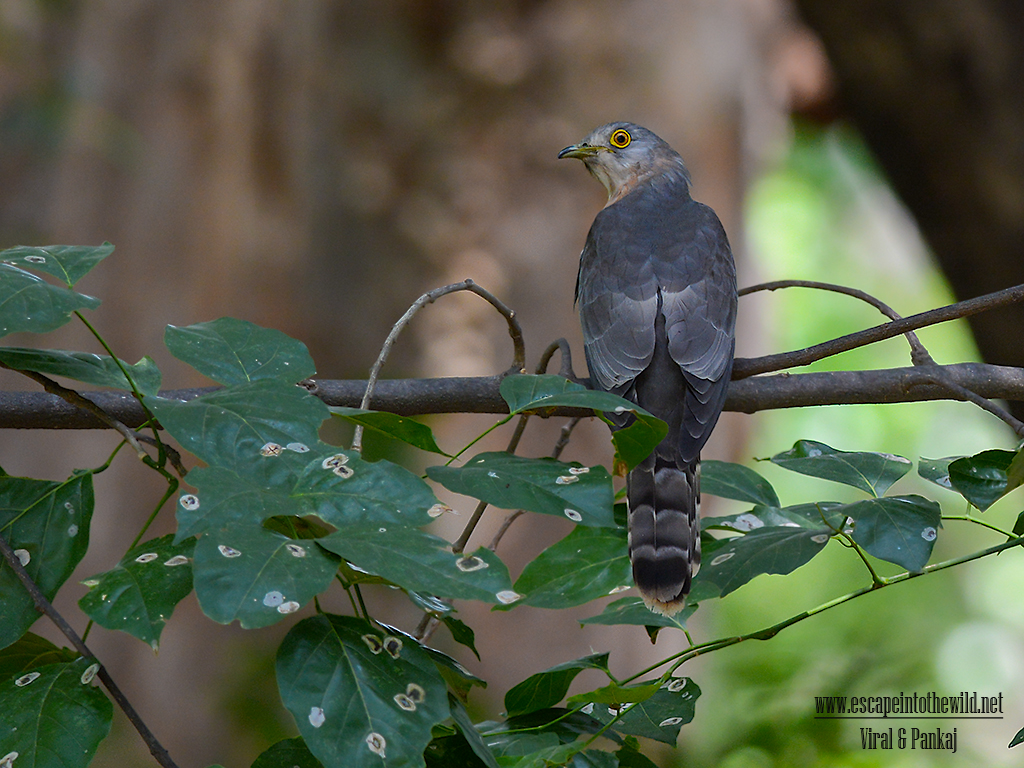Common Hawk-cuckoo
Presence
of Common Hawk-cuckoo is easily detected at our campus whole year by its loud calls.
It is specifically more vocal in summer. We can hear its calls literally
throughout the day, early mornings are their favourite time for singing. In
fact these manic, piercing calls sometimes gets on our nerves and earned its famous
nickname ‘brain-fever bird’.
The
call of this bird also popularly transcribed as brain-fever in English from its
remarkable resemblance to the word "brain- fever… brain-fever…”
repeated 5-6 times in a piercing voice running up the scale.
The
bird is called “બાપૈયો -Bappaiyo” in our Gujarati
language. Here in Gujarat farmers consider call of Common Hawk-cuckoo as good
omen…! Rural people believes call of Common Hawk-cuckoo is a sign of rain
coming very soon…!
The
common hawk-cuckoo is a medium- sized cuckoo, with distinctive yellow eye ring,
easily mistaken for Shikra. But then easily separate by cuckoo-like bill, broadly
barred tail and no mesial strip. The plumage is ashy grey above; whitish below,
cross-barred with brown.
They
seems to be active and easily spot after the first rain, most possibly because
of their breeding season. Like other cuckoos, Common Hawk-cuckoo also have no
taste for the trouble and responsibility of raising a chicks, certainly nest-parasitic,
make other birds do their duty. Clearly Common birds dislike its presence and
usually raise the alarming call.
The
species is arboreal, generally found single, perched silently on lower branches
of roadside trees. Flies low between nearby branches at first approach with
fast audible wing-beats, more like glide, before disappear. We saw Common hawk-cuckoo hunt mainly
insects, earthworms, caterpillars etc. from wet grassy soil. We observed a common hawk cuckoo following a group of large
grey babblers, both species can hunt and feed on hairy caterpillars which are
plenty in this region during rainy season. They pick caterpillar, squeeze and
rub to remove unwanted parts before eating. Once we saw Common hawk-cuckoo share hunting ground along with Indian Roller, Red-wattled
lapwing, Common Myna and Black Drongo. At other time we witnessed Common hawk-cuckoo feeding on fruits of Indian fig tree.
8th June 2017
Mandvi,
Kutch, Gujarat, India
Nikon D7100
AF-S Nikkor
300mm F/4D IF-ED + AF-S Teleconverter TC-14E
f/8, 1/200,,iso-500
Previous Next



Comments
Post a Comment